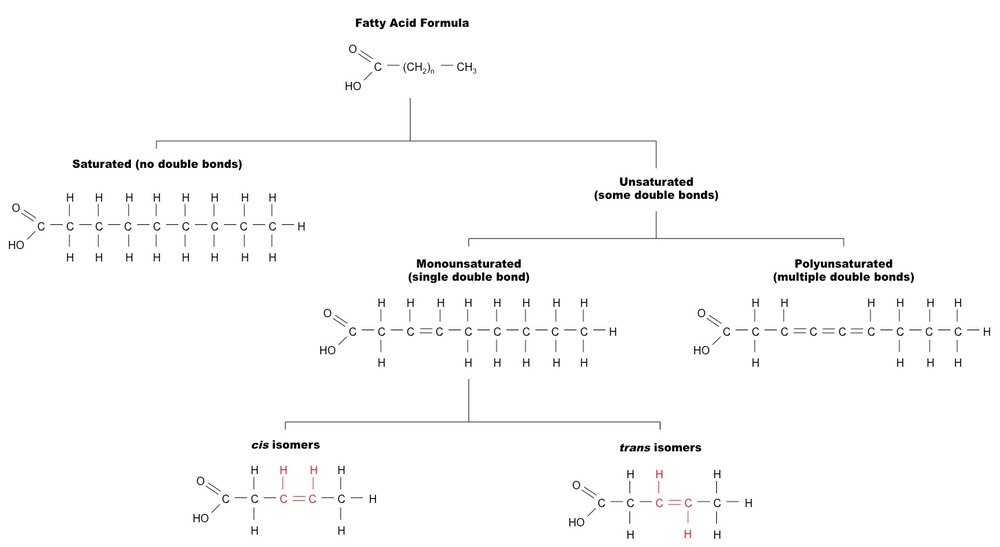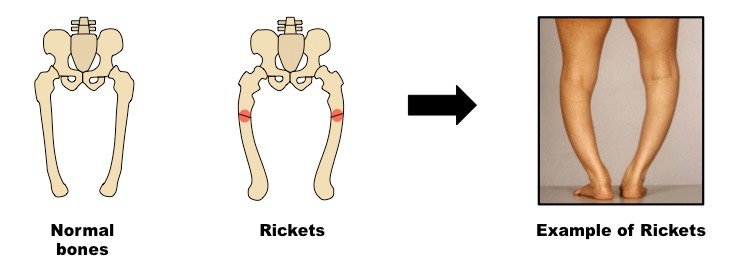A.1.1 Define nutrient
A nutrient is a chemical substance found in foods that is used in the human body
A.1.2 List the type of nutrients that are essential in the human diet, including amino acids, fatty acids, minerals, vitamins and water
Essential nutrients are those that cannot be synthesised by the body and must be ingested in the diet
Carbohydrates are not considered essential nutrients because in certain human diets energy is obtained from other sources without ill effect
Essential nutrients include:
- Amino acids (e.g. lysine and methionine)
- Fatty acids (omega 3 and omega 6)
- Minerals (iron, sodium, potassium, calcium, phosphorus and iodine)
- Vitamins (vitamins A, C, D and folate)
- Water
A.1.3 State that non-essential amino acids can be synthesised in the body from other nutrients
Eleven out of the twenty amino acids are non-essential and can be synthesised in the body from other nutrients
- The body will only expend the energy required for their biosynthesis if they cannot be derived from the diet
A.1.4 Outline the consequences of protein deficiency malnutrition
- Protein deficiency malnutrition is caused by an inadequate supply of one or more essential amino acids
- As a result there are a lack of plasma proteins in the blood, leading to the retention of fluid in the tissues which causes abdominal bloating
- This is coupled with a wasting of muscles, flaky appearance of the skin and sparse hair with a lack of pigmentation
- In children especially, it results in a retardation of physical and mental development
- Individuals suffering from protein deficiency malnutrition will often present as lethargic, with little interest in their surrounding
- Protein deficiency malnutrition is a key factor in the development of kwashiorkor
Symptoms of Kwashiorkor

A.1.5 Explain the causes and consequences of phenylketonuria (PKU) and how early diagnosis and a special diet can reduce the consequences
Causes and Consequences of Phenylketonuria:
- A genetic mutation changes the gene coding for tyrosine hydroxylase, which is responsible for metabolising phenylalanine into tyrosine
- Phenylalanine is instead converted into phenylpyruvic acid, resulting in a high level of ketones in the blood and urine
- Over time, this may result in brain damage and mental retardation

Diagnosis and Treatment of Phenylketonuria:
- Diagnosis can be made by a simple blood test for the levels of phenylalanine – this test is conducted shortly after birth
- As PKU results in the build up of phenylalanine in the bloodstream, it is treated by following a special diet that is low in protein
- Diet should include fruits, grains, vegetables and special formula milk and must be undertaken from early in life or else symptoms will appear
- Symptoms may include tremors, seizures, eczema, skin rashes and eventually brain damage (mental retardation)
A.1.6 Outline the variation in the molecular structure of fatty acids, including saturated fatty acids, cis and trans unsaturated fatty acids, monounsaturated and polyunsaturated fatty acids
Fatty acids all have the same general structure, but there may be variation in the bonding between the carbon atoms
- Saturated fatty acids have no double bonds between carbon atoms
- Monounsaturated fatty acids have a single double bond between two carbon atoms
- Polyunsaturated fatty acids have multiple double bonds between carbon atoms
- In cis isomers, hydrogen atoms attached to the double-bonded carbon atoms are on the same side
- In trans isomers, hydrogen atoms attached to the double-bonded carbon atoms are on different sides

A.1.7 Evaluate the health consequences of diets rich in the different types of fatty acid
- Saturated fats and (trans) polyunsaturated fatty acids raise levels of LDL cholesterol, leading to a higher risk of atherosclerosis and coronary heart disease (CHD)
- Monounsaturated and (cis) polyunsaturated fatty acids raise levels of HDL cholesterol and inhibit LDL cholesterol, lowering the risk of atherosclerosis and CHD
- Unsaturated fats are essential nutrients (cannot be synthesised by the body), saturated fats are not
- All types of fatty acid consumed as part of the dietary intake will cause weight gain and increase risks of heart disease if taken in excessive amounts
Comparison of the Different Types of Fatty Acids

A.1.8 Distinguish between minerals and vitamins in terms of their chemical nature
Minerals are usually inorganic elements in ionic form – examples include sodium (Na+), potassium (K+) and iodine (I–)
Vitamins are organic compounds made by plants or animals – examples include retinol (vitamin A) and calciferol (vitamin D)
A.1.9 Outline two methods that have been used to determine the recommended daily intake of vitamin C
Retrospective Research:
- An older method used was to identify sufferers of vitamin C diseases (e.g. scurvy) and determine their levels of vitamin C
- This was an inexact method for determining dietary requirements as it was based on preventing disease, not promoting cellular functions
Clinical Trials:
- More recent attempts at determining the recommended daily intake of vitamin have involved undertaking experimental studies
- This has included testing cell cultures, guinea pigs and finally humans (during WWII, some objectors volunteered to participate in trials)
- The purpose of these tests are to identify cellular function and disease onset at different daily dosages of vitamin C
A.1.10 Discuss the amount of vitamin C that an adult should consume per day, including the level needed to prevent scurvy, claims that higher intake gives protection against upper respiratory tract infections, and the danger of rebound malnutrition
- Common sources of vitamin C (ascorbic acid) include citrus fruits, orange juice and vitamin C tablets
- The recommended daily allowance (RDA) of vitamin C will vary between individuals according to age and gender
- The recommended daily intake (RDI) of vitamin C has been set at 65 – 90 mg (this is based on the highest RDA and thus covers all individuals)
- This intake has been determined based on the levels required to ensure no person is at risk of a deficiency disease (i.e. scurvy)
- However, there is significant debate as to whether the daily intake should be higher (> 1000 mg), in order to achieve beneficial effects
- Vitamin C is a potent antioxidant that is also involved in detoxification and some claim that higher doses may boost the immune system, speed recovery from injury and protect against upper respiratory tract infections
- Others suggest that taking larger doses would promote rebound malnutrition, whereby the body adjusts to a larger intake and responds poorly whenever dosages drop back to normal levels
- Neither claims are currently well supported by large-scale, controlled trials and so the evidence for these claims must be considered weak
A.1.11 List the sources of vitamin D in human diets
Vitamin D can be produced by the skin in response to sunlight, but can also be sourced in a diet containing any of the following:
- Cereal (fortified)
- Oily fish (e.g. tuna)
- Milk (fortified)
- Egg (specifically yolk)
- Liver
- Yogurt
A.1.12 Discuss how the risk of vitamin D deficiency from insufficient exposure to sunlight can be balanced against the risk of contracting malignant melanoma
- UV light causes the skin to synthesise vitamin D, where it is stored in the liver for when UV levels are low (i.e. during the winter seasons)
- Insufficient sun exposure may lead to skeletal deformities (i.e. rickets) due to insufficient vitamin D levels
- However high levels of UV light can damage skin cells and cause skin cancers (malignant melanomas), so exposure must be limited
- Using sun block and covering skin with clothing will prevent UV radiation reaching the skin, inhibiting vitamin D production
- Certain diets (e.g. vegans, vegetarians) are more likely to result in a lack of vitamin D, so that such people need more exposure to sunlight
- Individuals with darker skin pigmentation produce vitamin D more slowly, but are better protected against skin cancers
- Certain ethnicities may be at a greater risk of vitamin D deficiency due to cultural or religious practices (e.g. Muslims wearing a burqa)
- Including vitamin D supplements in the diet can reduce the risk of vitamin D deficiency without requiring sun exposure
Vitamin D Deficiency Causing Rickets

A.1.13 Explain the benefits of artificial dietary supplementation as a means of preventing malnutrition, using iodine as an example
- Artificial supplementation ensures a population has sufficient access to essential nutrients, even when the natural dietary supply may be limited
- Iodine is necessary for thyroxine production and an iodine deficiency will lead to goitre (enlarged thyroid) and mental retardation
- Dietary supplementation is usually achieved via the production of iodised salt, as few foods are rich in iodine (mainly found in marine food)
- The cost to supplement these products is minimal compared to the cost of treating and caring for iodine deficient individuals
A.1.14 Outline the importance of fibre as a component of a balanced diet
Dietary fibre includes the components of foods which cannot be digested by the human body (predominantly cellulose)
Dietary fibre is an important part of a balanced diet as it plays an important role in human health:
- Provides bulk in food, ensuring the continuous passage of materials through the digestive tract
- Stimulates peristaltic contractions to enable the digestive system to pass food
- Helps regulate blood sugar and reduces blood cholesterol
- Lowers risk of appendicitis and intestinal cancer
- Helps prevent constipation